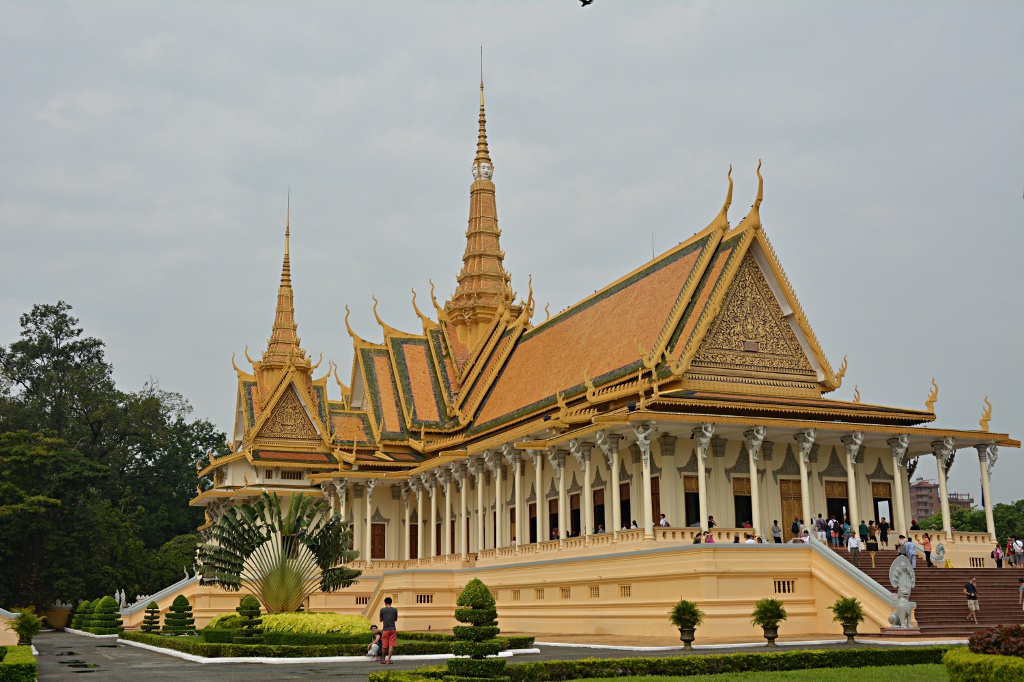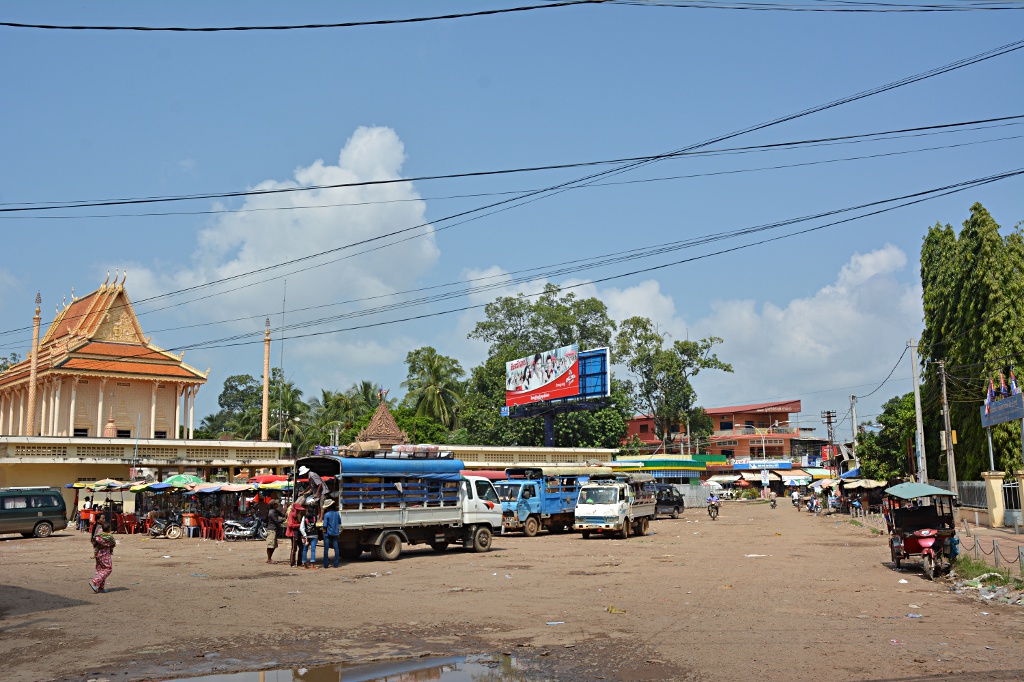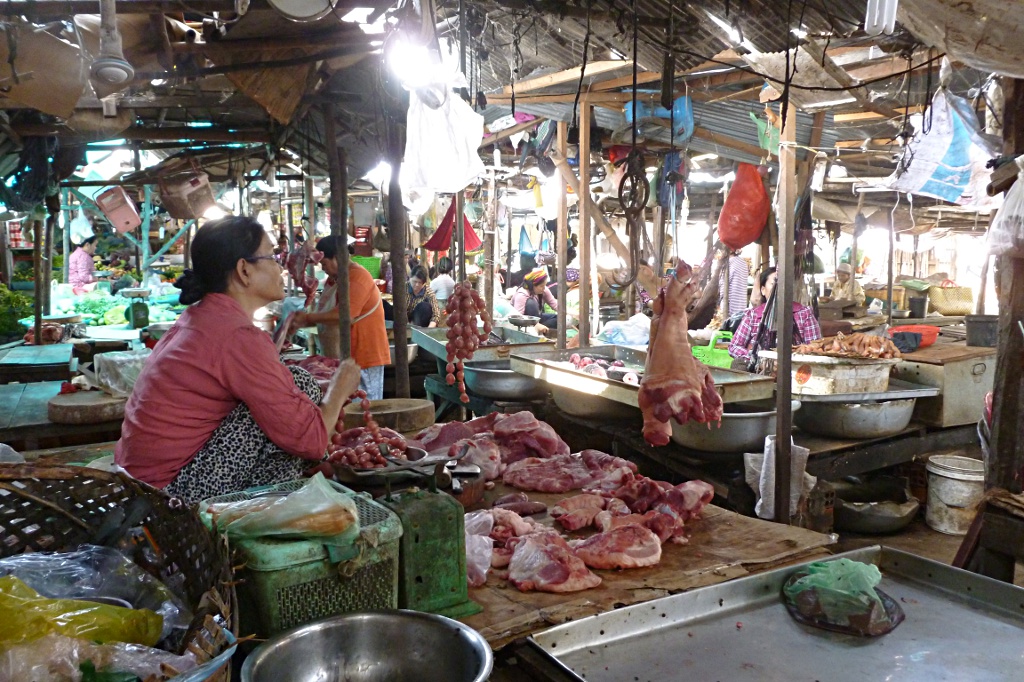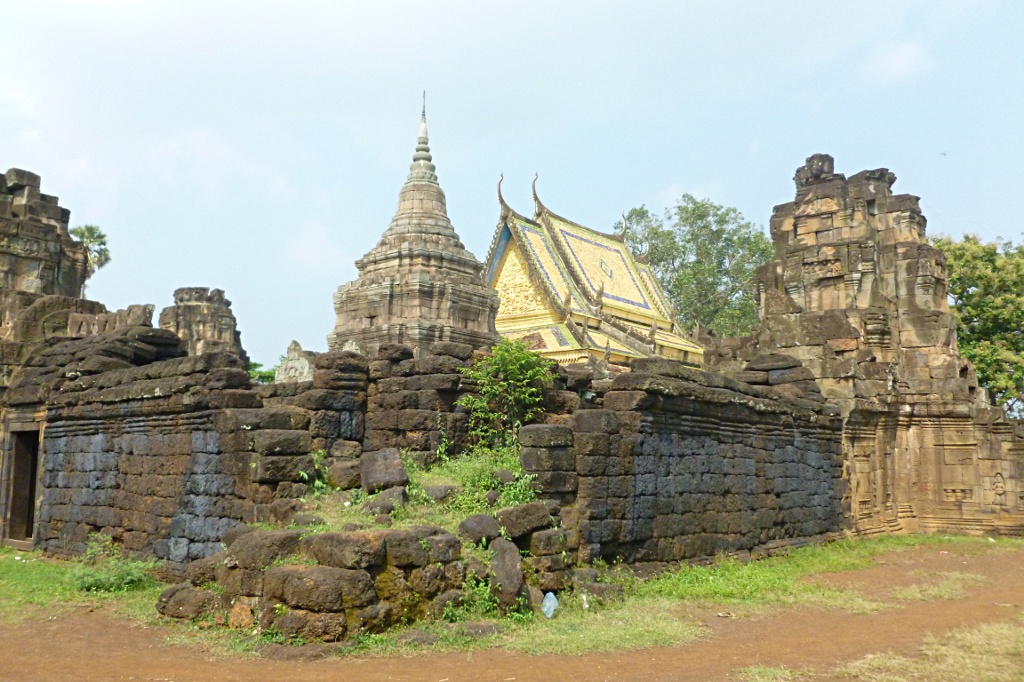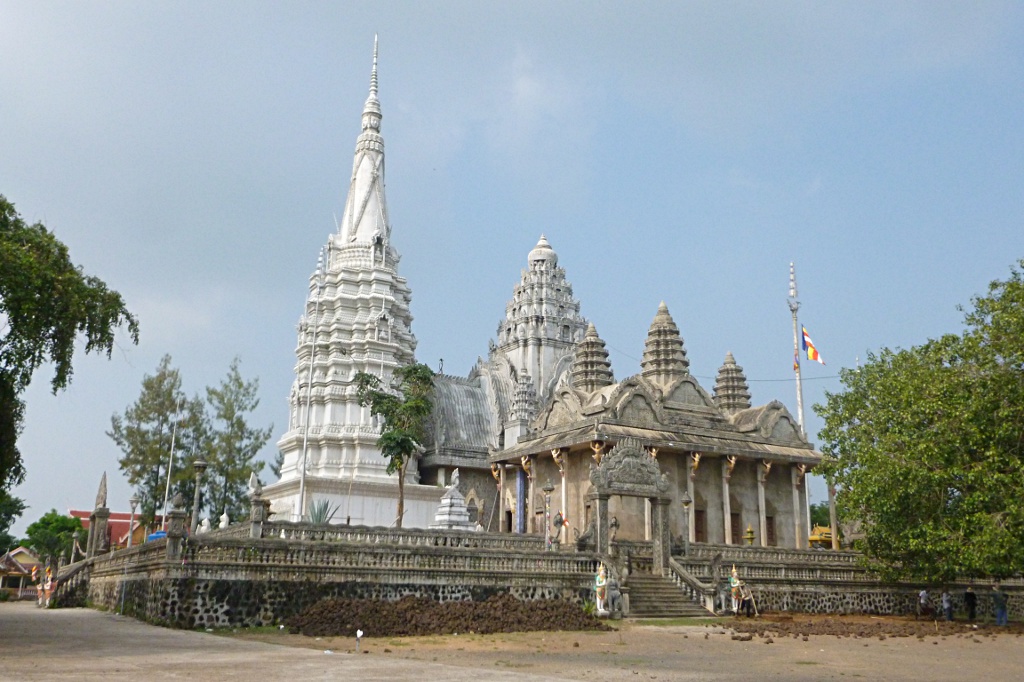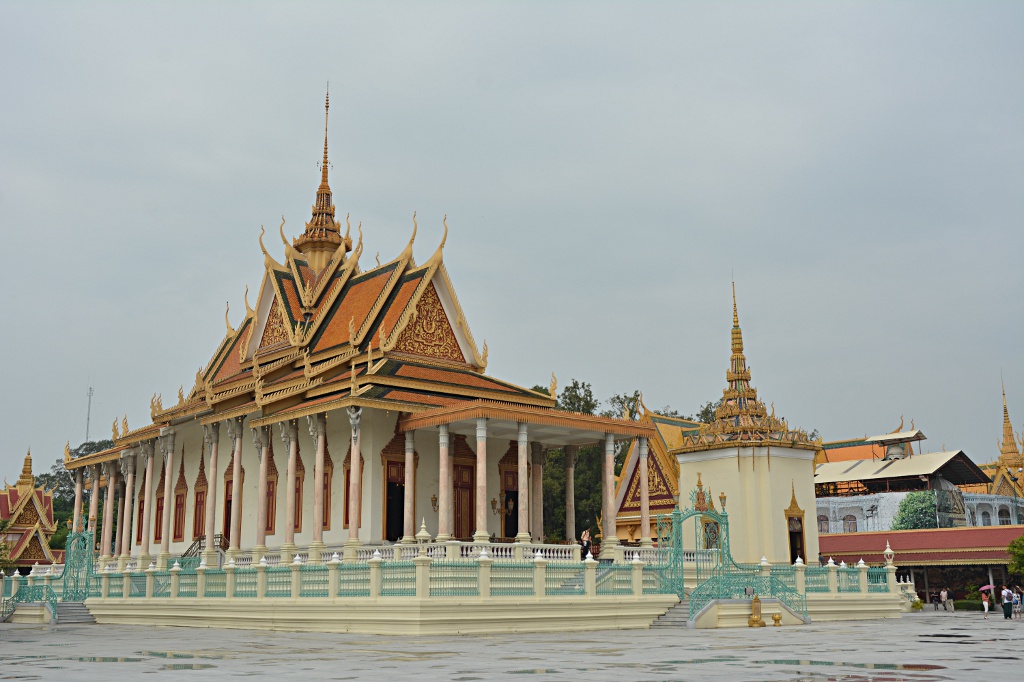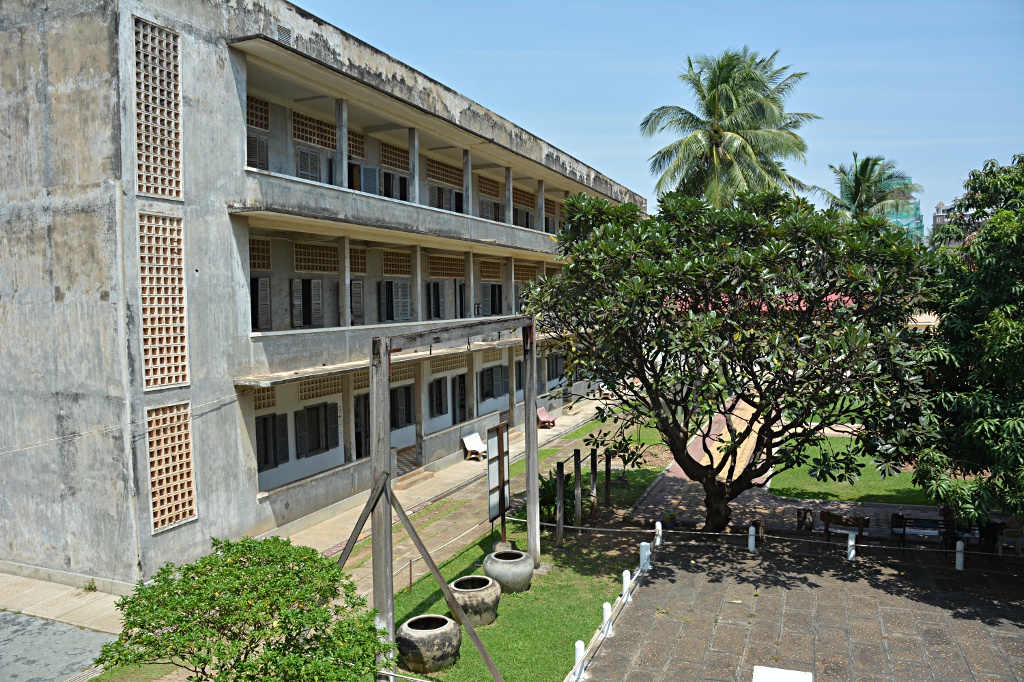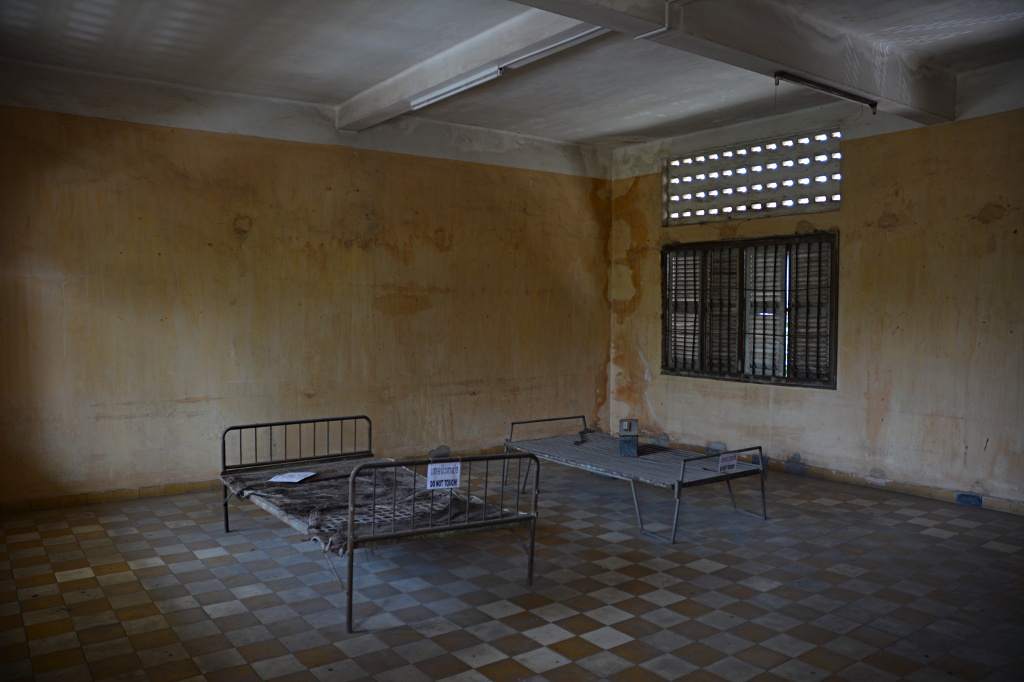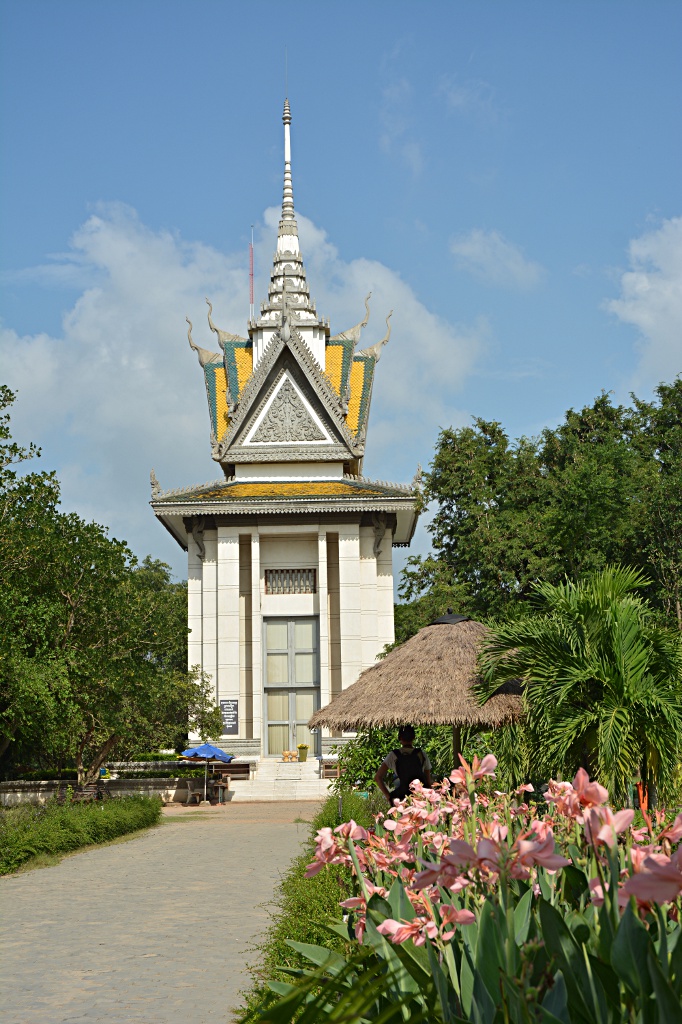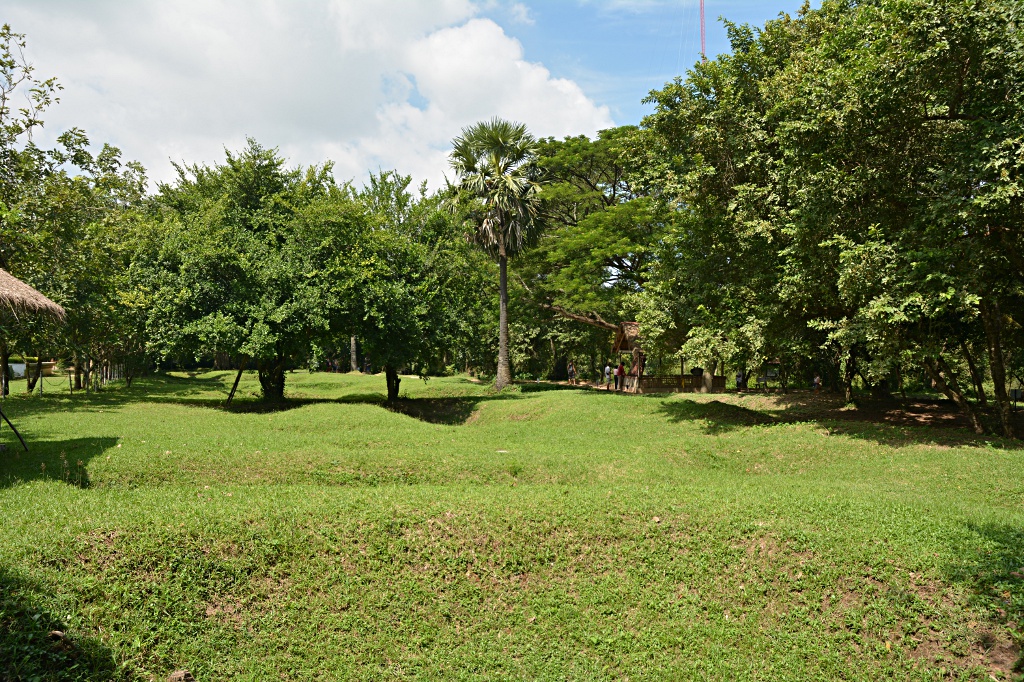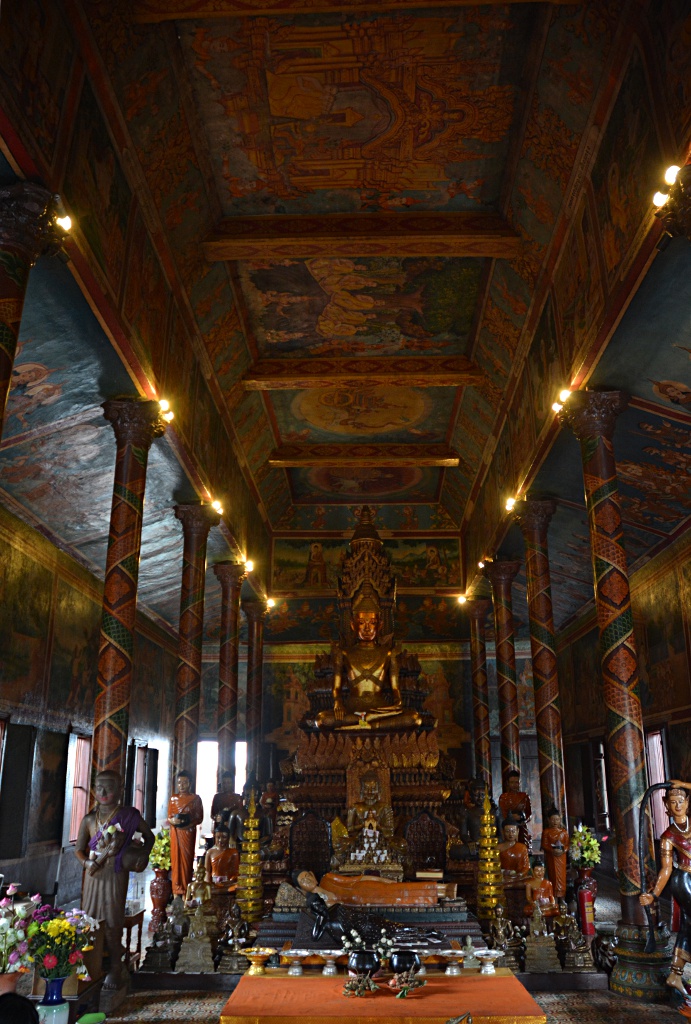Following two wonderful days on Don Det and Don Khone islands time had come to say goodbye. To say goodbye to the wonderful landscape, to the country of Laos and also to say goodbye to a few people we had met along the way. While most tourists headed for Siem Reap and Angkor Wat in western Cambodia, we opted to slowly make our way along the Mekong river down to Phom Penh. Along the way we stopped in Kratie and Kampong Cham which proved to be two excellent choices.
On Don Det island we had bought a bus ticket directly to Kratie. Along with the sale came a promise that the ride would take about 5 hours. We thus expected that we would arrive in Kratie shortly after lunch. The reality to reach the provinicial capital in north-eastern Cambodia proved to be quite a bit different. Let’s start from the beginning. Right at 8 o’clock sharp we arrived at the dock of Don Det and were surprised to encounter so many tourists who wanted to board the same boat as us. The majority was heading south to Cambodia. We all gathered at a small bus station in Nakasang and nice gentlemen explained how he would help us get a Cambodian visa on arrival for 40 USD. While most people started blindly filling in the forms, we immediately realized that the gentlemen would pocket 5 of those dollars for applying for the visa. Nevertheless we agreed to play along and thus could spend a few minutes more in the shade of no-mans land between Laos and Cambodia than those very few who opted to do everything themselves. After roughly an hour of waiting we ggot our passports back and the first load of tourists disappeared into Cambodia. It looked like we were part of the unlucky group who had to wait another hour for another minibus from Pakse. Once people (or rather cattle) and luggage were all safely stowed we chased after the first group which we caught up to in Stung Treng. That group’s minibus had gotten stuck in one of the huge potholes in Cambodias road towards Laos. The company representatives were kind enough to offer food and drinks for additional payments.
While the bunch heading for Siem Reap was ushered into another minibus, the travelers headed for Kratie and Phnom Penh got the backseats of a minibus already filled with locals. The one unfortunate person was the French guy who had hoped to reach Phnom Penh the same day. Since we already had 5 hours delay in a 5 hour trip when reaching Kratie, there was no more onward bus that day. He had to spend the night in Kratie.
We started our tour to find a place to sleep for the night and little later were able to check-in at a nice place. We deposited our luggage and set out to get a first impression of Kratie includinh Cambodian food which we found near the bus station.
We decided to stay two nights in the provincial capital to learn more about the city and to explore the island of Koh Trong on the Mekong river. The city gave us a first impression on how life in Cambodia works. We were surprised to find so many differences compared to Laos. Two large topics turned out to be poverty and garbage. We quickly realized that food was a bit cheaper but also simpler and smaller portions are served in Cambodia. The markets turned out quite a bit dirtier and the bus system is much less organized. Garbage turned out to be omnipresent in and around Kratie. We really started understanding the reason for poverty a little bit later in Phnom Penh.
Fortunately there was also a load of good things to discover. Part of these things were the sugar cane drinks, which are sold at literaly every street corner of Kratie by a nice seemingly pajama wearing lady. Those pajama was another highlight, although not only common in Kratie, but also other cities in Cambodia. The food also turned out to be a pleasant surprise and a welcome change to the noodle soups of Laos.
After we had finished an extremly sweet iced tea, we headed to the ferry pier to catch the ferry to Koh Trong. Luckily the ferry was almost full when we arrived to we didn’t have to wait long bevor we took off. About 10 minutes later we arrived in another world. Koh Trong offers a few small attractions for tourists as for example a couple of guesthouses and restaurants and a few sights to see. The island however is primarily a piece of countryside where nature dictates life and the locals try to get everything they can out of the small patch of land. They farmers even united in a cooperative to be more productive. A large range of range of fruits and vegetables are grown by this cooperative from rice to bananas, tomatoes and several types of beans. The buildings are all still traditional, i.e. built from wood on stilts. We hiked in roughly two hours around the island, such that we were sure to catch the ferry before it stops running.
For Saturday we had agreed with a local gentleman to meet at 7:30am at the bus station for a ride to Kampong Cham. We met the fellow even before we reached the bus station as he had spotted us from far away. He showed us to the correct minibus, which was not leaving until 8:30am according to the driver. Nice sales trick by the gentlemen telling us the bus would leave at 8am to lure us into his friend’s car. It didn’t matter to us really, since we hadn’t eaten breakfast due to our experience teaching us that there is always enough time between showing up at a bus station and until our bus leaves. We sat down at one of the stalls at the bus station to enjoy a simple yet delicious breakfast consisting of rice, omelett and a few slices of meat.
Around 11am we crossed the mighty bridge across the Mekong river to reach Kampong Cham. Kampong Cham, another provincial capital, a little bit larger than Kratie, still has a center which can easily be explored on foot. We quickly found the few guesthouses alonf the Mekong river and after checking out a few of the rooms and negotiating prices, we settled into a large Penthouse with a huge terrace in front.
We gained an overview of the town center rather quickly, such that we could focus on re-filling our stomachs. This ended up being a quite interesting undertaking because the sales lady interpreted my gesture for fish and the dish which was placed in front of us resembled rodents more than fish. The ginger chicken which was our second order and a Khmer specialty once again tasted amazingly good.
Following lunch we headed out to see the few tourist attractions around town. We decided to visit the Wat Nokor and the brother and sister hills including their respective temples. We reached Wat Nokor on foot and had to experience a tricky tourist police man. Even though his job is to supervised things around the site, he asked for an entrance fee… The specialty of Wat Nokor is that it is one of the few pre-angkorian wats which is still active. Inside the ruins of the old solid stone walls, the people built a new wat.
To reach the brother and sister hills we used one of the most typical Cambodian means of transport: the moto or motorbike. The young fellow however was a little bit off when suggesting that they could wait and bring us back into the city. So we asked him to provide only the ride to the mountains, to which he agreed. Once on the sister hill he had a change of heart and suggested to wait and drive us back to the market in town for the same price we had paid to get our of the city.
On the sister hill we ran into tour buses carrying foreign tourists for the first time in a long time. Fortunately there still weren’t too many of them, such that we could visit the place in relative peace and quiet.
Back in town we found a nice local restaurant where we didn’t just eat a delicious meal, but also drank some amazing pineapple fruitshakes. Back in our penthouse we prepared our luggage and ourselves for the final 124 km to Phnom Penh.
Once again we avoided paying commission to the travel agencies and set off after breakfast to find a bus to Phnom Penh. Through asking around among the locals we found a bus company which not just offered a bus ride to Phnom Penh, bus also a small bottle of water and a refreshment towel. According to the schedule the bus was due to leave only five minutes later, which it finally did about half an hour later. Roughly three bumpy hours later we reached the central bus stop, heaving had first taste of Phnom Penh traffic jams for the last hour or so.
Once again we were greeted by a nice tuk-tuk driver upon our arrival in Phnom Penh. He promised us to drive us from guesthouse to guesthouse for one dollar, until we had found one that suited our wishes. We happily agreed and to his pleasure found a place with which he had an agreement for a small provision. For us it was the best place in terms of value for money within our given budget.
After a Khmer noodle dish we visited the National Museum across the street from the small restaurant. Despite beautiful architecture, the musem was rather uninspiring. The one wing where they exhibited the two fighters from Angkor and how these two statues were recently returned to Cambodia was rather good though. Otherwise the museum resembled a collection of random artefacts from all periods, found all over the country.
We strolled around the city, inquired how we could possibly make the trip from Phnom Penh to Siem Reap and to/from the Vietnamese border by boat before we tried some more Khmer dishes in a small restaurant near the riverfront. Lenka tried the famous trey fish which I enjoyed a deliciously spiced Lok Lak (quickly fried beef).
On Monday we started a big tourist tour. Since our guesthouse was located near the palace, we first headed there on foot. Among a few tour groups we found our little spot to take a peek at the throne hall, the Silver Pagoda and the other buildings surrounding them.
From the palace we continued south to find a restaurant where Lenka also could find some breakfast. A few steps further we admired the independence monument before starting to look out for tuk-tuk drivers for the more remote places. After a surprisingly short period of haggling we reached an agreement at half the rate he originally asked for.
What came next was less entertaining. This was not the fault of the tuk-tuk driver, but rather with the destinations we had chosen for our visit. First we were dropped of at Tual Sleng or S21 prison. This prison served during the Khmer Rouge regime to imprison and torture members of the Khmer Rouge who were believed to have betrayed the regime. The poor souls were tortured until they admitted to having committed some crime which they never actually did commit. Once the prisoners were successfully tried, they were sent to Cheung Ek, the next stop on our tour. Cheung Ek is better known as the Killing Fields. Whoever arrived as a prisoner there would only have hours left to live. Using most brutal methods the Khmer Rouge killed roughly 20000 people in Cheung Ek in the time from 197 until late 1978, burrying their remains in mass graves. While most famous, Cheung Ek was only one of hundreds of killing fields in Cambodia during that time. An outstanding audio guide describes the somber place and provides more background into this dark part of Cambodian history, eliminating roughly 2 million or one quarter of the Cambodian population.
With a completely different mindset we return into the traffic chaos which is Phnom Penh, particular on the road leading to Cheung Ek due to major contructions. Or expert tuk-tuk driver navigated this mess with highest precision and safely brough us to the Russian Market. The Russian Market is quite an exceptional market. While the stalls take the shapes as you mostly see with textile markets in Asia, it was way more that was an offer than just textiles. Besides clothing one could also purchase car and motorbike parts, food and of course souvenirs. Our shopping solely consisted of another couple of excellent fruitshakes.
Our last stop of the Phnom Penh tourist tour was the Wat Penh, which is named after the lady named Penh, who gave the city its name. Penh apparently discovered some remains of the Buddha on the hill (Phnom), which resulted in the name of Phnom Penh, Penh’s hill. The first thing we spotted were the big signs inviting foreigners to pay one dollar entrance fee. We politely obliged before checking out the temple and the little ghost houses around it.
After dinner we packed our bags to prepare for another journey to Cambodia’s sea side.

